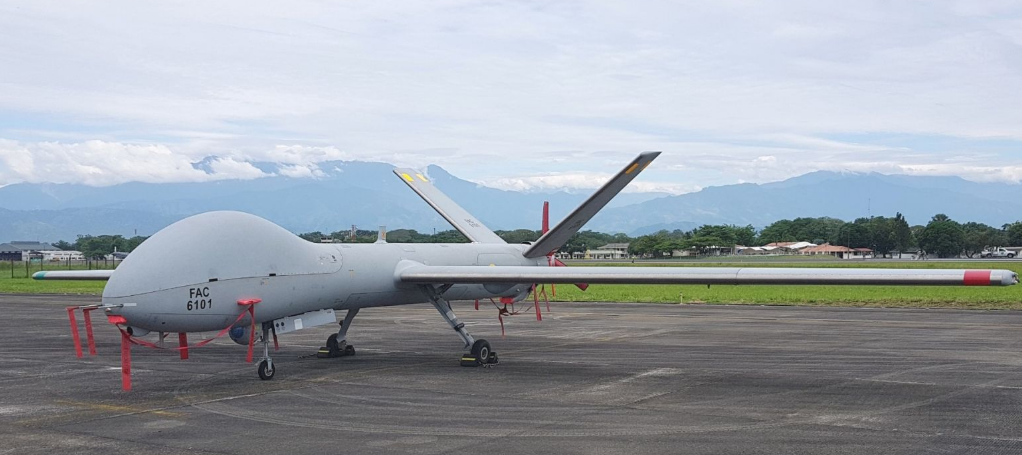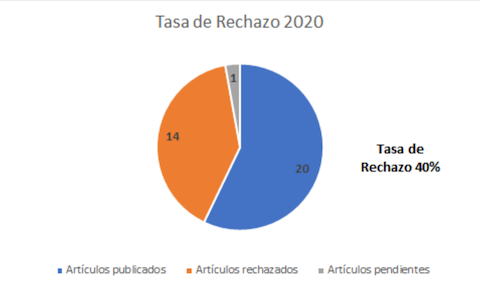Neuropsychological Training Tool for Scan Eagle Unmanned Aerial Vehicles Operators
DOI:
https://doi.org/10.18667/cienciaypoderaereo.658Keywords:
ART; Neurocognitive Training; Cognitive SkillsAbstract
The unwanted safety events in Scan Eagle Unmanned Aircraft Vehicles (uav), have been attributed to the Human Error, especially to decision making and mission errors, that could be susceptible to improve with specific training as a countermeasure to mitigate the risk of accidents. This paper proposes a training tool based on neuropsychological functioning for uav’s operators of the Colombian Air Force, for improving skills and risk management. An analytical cross-sectional non-experimental study was performed. Brain activity was monitored by continuous eeg using B-alert X10 during simulated missions in Scan-eagle simulator to identify beta frequency activity analytical cross section Electric electrical activity was monitored by electroencephalography (EEG) using B-alert x10 device during simulated missions in the Scan-Eagle simulator to identify higher brain activity areas and banfe-2 battery was applied to assess executive functions and thinking modes. 17 male operators of 28 ± 2,7 years were evaluated. Results were analyzed according previous academic studies. Results showed that the six most used areas in the art operation are those in charge of numerical ability, maneuvers that require the use of the opposite hand to the dominant one, use of the imagination, spoken language, the reasoning area and finally the area of three-dimensional erception. Operators with previous flight experience, showed a medial and orbital brain activity with an automatic intuitive thinking and lower cognitive load during eeg monitoring; on the other hand, groups without previous flight experience showed a frontal dorsolateral reflexive thinking with higher cognitive load in eeg. A tool for autonomous neurocognitive training is designed and additional alternatives are proposed to complement uav operators training for potentializing an automatic intuitive thinking with less cognitive load.
Downloads
References
Barnes, M. J., Knapp, B. G., Tillman, B. W., Walters, B. A., & Ve-licki, D. (2000). Crew Systems Analysis of Unmanned Aerial Vehicle (uav) Future Job and Tasking Environments. United States Army, Army Research Laboratory, https://www.researchgate.net/publication/235049816_Crew_Systems_Analysis_of_Unmanned_Aerial_VehicLe_UAV_future_Job_and_Tasking_Environments
Bavelier, D., Green, C., Pouget, A.,&Schrater, P. (2012). Brain Plasticity through the Life Span: Learning to Learn and Action Video Games. Annual Review of Neuroscience, 35,391-416. https://doi.org/10.1146/annurev-neuro-060909-152832
Bavelier, D., & Green, C. (2016). Videos que potencian el cerebro. Investigación y Ciencia, 480(2), 18-24. https://www.investigadonydenda.es/revistas/investigadonydencia/efectoscerebralesdelosvideojuegos679/videojuegos-que-potencian-el-cerebro-14460
Colder Carras, M., Van Rooji, A., Spruijt-Metz, D., Kvedar, J., Griffiths, M. D., Carabas, Y., & Labrique, A. (2018). Commercial Video Games as Therapy: A New Research Agenda to Unlock the Potential of a Global Pastime. Frontiers in Psychiatry, 8,300. https://doi.org/10.3389/fpsyt.2017.00300
Flores, J., & Otrosky-Solís, F. (2012). Desarrollo neuropsicoló-gico de lóbulos frontales y funciones ejecutivas. Manual Moderno.
Flores, J., Otrosky-Solis, F., & Lozano, G. (2008). Batería neurop-sicológica de funciones ejecutivas y lóbulos frontales: presentación. Revista Neuropsicología, Neuropsiquiatría y Neurociencias, 8(1), 141-158.
Green, C. S., & Bavelier, D. (2012). Learning, Attentional Control, and Action Video Games. Current biology. Current biology, 22(6), R197-R206.. https://doi.org/10.1016/j.cub.2012.02.012
Inspección General Fuerza Aérea Colombiana. (2016). Investigaciones Aeronaves Remotamente Tripuladas. Fuerza Aérea Colombiana.
Kay, G., Dolgin, D., Wasel, B., Langelier, M., & Floffman, C. (1999). Identification of the Cognitive, Psychomotor and Psychosocial Skill Demands of Uninhabited Combat Aerial Vehicle (ucav) Operators. Naval Air Systems Command. https://apps.dtic.mil/dtic/tr/fulltext/u2/a368578.pdf
López, N. (2014). Análisis y clasificación de factores humanos en eventos no deseados de segundad operacional. (eventos) de aeronaves remotamente tripuladas (art) de la Fuerza Aérea Colombiana en el 2012,5.
Michel, C., & Brunet, D. (2019). eeg Source Imaging: A practical Review of the Analysis Steps. Frontiers in Neurology, 10(325). https://doi.org/10.3389/fneur.2019.00325
Moreno, C., & Lopera, F. (2010). Efectos de un entrenamiento cognitivo sobre el estado de ánimo. Revista Chilena de Neuropsicología, 5(2), 146-152.
Motoa, F. (2017,3 de mayo). Jóvenes empresarios les apuestan a los drones. El Tiempo, https://www.eltiempo.com/bogota/santiago-espitia-y-felipe-castillo-empresarios-que-incursionan-en-el-negocio-de-los-drones-84286
Murray, C., & Park, W. (2013). Incorporating Fluman Factor Considerations in Unmanned Aerial Vehicle Roting. ieee Transactions on systems, Man and Cybernetics: Systems, 43(4), 860-870. https://doi.org/10.1109/TSMCA.2012.2216871
Organización de Aviación Civil Internacional oaci. (2012). Manual sobre sistemas de aeronaves pilotadas a distancia (rpas).https://www.icao.int/SAM/Documents/DSOSYMP12/Aeronaves%20pilotadas%20a%20distancia%20RPA%20MUL.pdf#search=sobre%20sistemas%20de%20aeronaves%20pilotadas%20a%20distancia
Retureta, B., Rodríguez, B., López, Y., & Travieso, M. (2012). Terapia de rehabilitación con entrenador mental en el adulto mayor con deterioro cognitivo. Medimay, 18(2), 3-11. http://revcmhabana.sld.cu/index.php/rcmh/article/view/543.
Shappell, S.,&Wiegmann, D. (2000). The Human Factors Analysis and Classification System—hfacs. u.s. Department of Transportation Federal Administration Aviation. Thompson, W., Tvaryanas, A., & Constable, S. (2005). u.s. Military Unmanned Aerial Vehicle Mishaps: Assessment of the Role of Human Factors Using Human Factor Analysis and Classification System (hfacs). United States Air Force.
Vargas, L., Gómez, M., & Gómez, R. (2013). Desarrollo de habilidades cognitivas y tecnológicas con aprendizaje móvil. Revista de Investigación Educativa del Tecnológico de Monterrey, 3(6), 30-39 https://www.rieege.mx/index.php/rieege/article/view/76/40
Vakili, A., & Langdon, R. (2016). Cognitive Rehabilitation of Attention Deficits in Traumatic Brain Injury Using Action Video Games: A Controlled Trial. Cogent Psychology. https://doi.org/10.1080/23311908.2016.1143732
Weigmann, D., & Shappell, S. (2001). A Human Error Analysis of Comercial Aviation Accidents Using the Human Factors Analysis and Classification System (hfacs). u.s. Department of Transportation Federal Administration Aviation.
Whitlock, C. (2014,20 de junio). Part One: When the Drones Fall from the Sky. The Washington Post https://www.washingtonpost.com/sf/investigative/2014/06/20/whendronesfallfromthesky/tid=sm_fb&utm_term=.ee7b2cc02cd0
Williams, K. (2004). A summary of Unmanned Aircraft Accident/ Incident Data: Human Factors Implications, u.s. Department of Transportation Federal Ad ministration Aviation.
Williams, K. (2006). Human Factors: Implications of Unmanned Aircraft Accidents: Flight-Control Problems. Department of Transportation Federal Administration Aviation.
Zhang, W., Feltner, D., J, Shirley. J., Swangnetr, M., & Kaber, D. (2016). Unmanned Aerial Vehicle Control Interface Design and Cognitive Workload: A Constrained Review and Research Framework. 2016 IEEE International Conferences on Systems, Man and Cybernetics (SMC). https://doi.org/10.1109/smc.2016.7844502

Downloads
Published
Issue
Section
License
Assignment of Copyrights
Authors assign Ciencia y Poder Aéreo journal the exclusive rights (reproduction, distribution, public communication, and transformation) to exploit and commercialize their work, in whole or in part, in all the formats and modalities of present or future exploitation, in all languages, throughout the life of the work and throughout the world.
All contents published in Ciencia y Poder Aéreo journal are licensed under a Creative Commons Attribution 4.0 International License, whose complete information is available at http://creativecommons.org/licenses/by/4.0/
Under the terms of this license, users are free to download, print, extract, archive, distribute and publicly communicate the content of articles, provided that proper credit is granted to authors and Ciencia y Poder Aéreo, scientific journal of the Graduate School of the Colombian Air Force. Except when otherwise indicated, this site and its contents are licensed under a Creative Commons Attribution 4.0 International License.
For other uses not considered under this license it is required to contact the Director or the Editor of the journal at the e-mail address cienciaypoderaereo1@gmail.com.
The Graduate School of the Colombian Air Force and this publication are not responsible for the concepts expressed in the articles, including the metadata or the affiliation stated by authors. This is the full responsibility of the authors.

Creative Commons License
How to Cite
Funding data
-
Departamento Administrativo de Ciencia, Tecnología e Innovación (COLCIENCIAS)
Grant numbers 56714




















